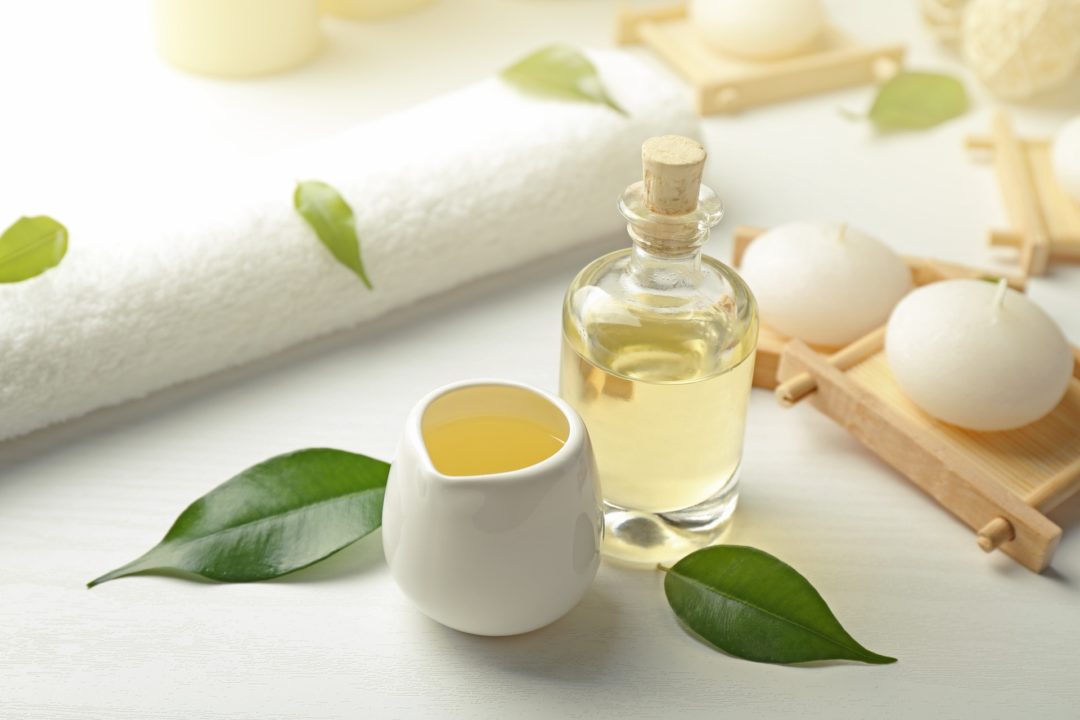Tea tree oil is a popular ingredient known for its antimicrobial properties. Medicinally, it is widely used as a topical treatment for minor cuts and wounds, other skin problems, and as an inhalant or in chest rub formulations to help alleviate the symptoms of the common cold. In addition, it is frequently included as an ingredient in animal care, home care, personal care, and cosmetic products. Australia is the major producer of tea tree oil, providing an estimated 80% of the global supply. In 2018, Australian tea tree oil exports reached a market value of AU$35 million (roughly US$21 million).1
Due to the relatively high costs of authentic tea tree oil, some unethical suppliers substitute materials labeled to contain tea tree oil with lower-cost adulterants. Tea tree oil adulterants include monoterpene-rich materials obtained from the industrial waste stream after the purification of camphor (Cinnamomum camphora), eucalyptus (Eucalyptus globulusand otherEucalyptus spp.), and pine (Pinusspp.) essential oils. Tea tree oil can also be adulterated by adding pure chemical compounds that originate from other plant materials, fermentation, or chemical synthesis.
Common analytical assays to evaluate the identity of essential oils include organoleptic (sensory) evaluations, physicochemical tests, and chemical methods. The main advantages and disadvantages of each analytical method, and the usefulness of these methods to detect tea tree oil adulteration have been summarized by Stefan Gafner, PhD, chief science officer of the American Botanical Council (ABC) and technical director of BAPP, and Ashley Dowell, manager of the Analytical Research Laboratory at Southern Cross University (East Lismore, NSW, Australia).
In addition to the assessment of the analytical methods, the document details the chemical composition of tea tree oil, potential confounding species, and known adulterants. The LGD has been peer-reviewed by 13 international experts from third-party contract analytical laboratories and the herbal industry.
“In the past three decades, tea tree oil has become a significant ingredient in many consumer health products, particularly topical products used for their antibacterial, antifungal, and other beneficial health effects,” said Mark Blumenthal, founder and executive director of ABC and founder and director of BAPP. “The rise in tea tree’s popularity has motivated unscrupulous suppliers to add cheap, sometimes synthetic chemicals to materials that are fraudulently being marketed as ‘tea tree oil’ in international commerce. The Tea Tree Oil Laboratory Guidance Document, when utilized by reputable company laboratories, will enhance the quality control process and help protect responsible companies from being victimized by sellers of fraudulent material.”
“Essential oils have a long history of being adulterated," Gafner commented. "As unethical suppliers become more sophisticated in their ways of substituting essential oils with lower-cost materials, companies that manufacture products with ingredients such as tea tree oil need the right tools to detect potential adulteration. I hope the Tea Tree Oil Laboratory Guidance Document will be a useful contribution in helping companies select the best methods for the task at hand.”
The Tea Tree Oil LGD is the 45th peer-reviewed publication published by BAPP and the sixth in the series of LGDs. As with all publications in the program, the laboratory guidance documents are freely accessible to all ABC members, registered users of the ABC website, and all members of the public onthe program’s website(registration required).
The ABC-AHP-NCNPR Botanical Adulterants Program LGDs identify the most suitable analytical methods for detection of certain adulterants and authentication of specific botanical materials in all the available forms (whole, cut, powdered raw materials, extracts, juices, and/or essential oils). To ensure all aspects are covered, positive assessments of analytical methods are based on a thorough review of available methods from official compendia, relevant methods in the published peer-reviewed scientific literature, and sometimes those provided by botanical ingredient suppliers, manufacturing companies, and independent third-party analytical laboratories. The guidance is intended for quality control personnel in the herbal medicine, botanical ingredient, dietary supplement, conventional food, and cosmetic industry sectors, and analysts in analytical testing laboratories, to help them identify the appropriate techniques and methods for their specific analytical needs.
Reference
- Brown J. Tea tree industry fights to keep its oil classified as a therapeutic good, not an aromatherapy product. The Land. Published April 19, 2018. Available at: www.theland.com.au/story/5349698/threat-to-tea-tree-oil-industry. Accessed Sept. 15, 2018.










